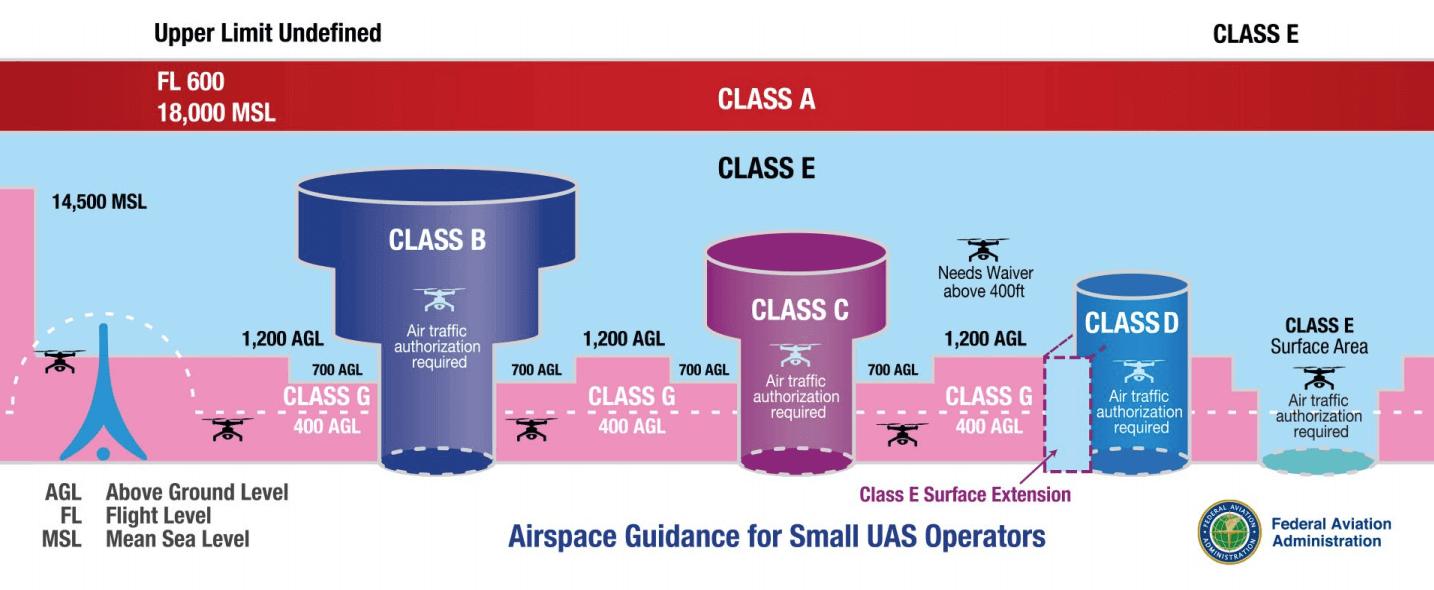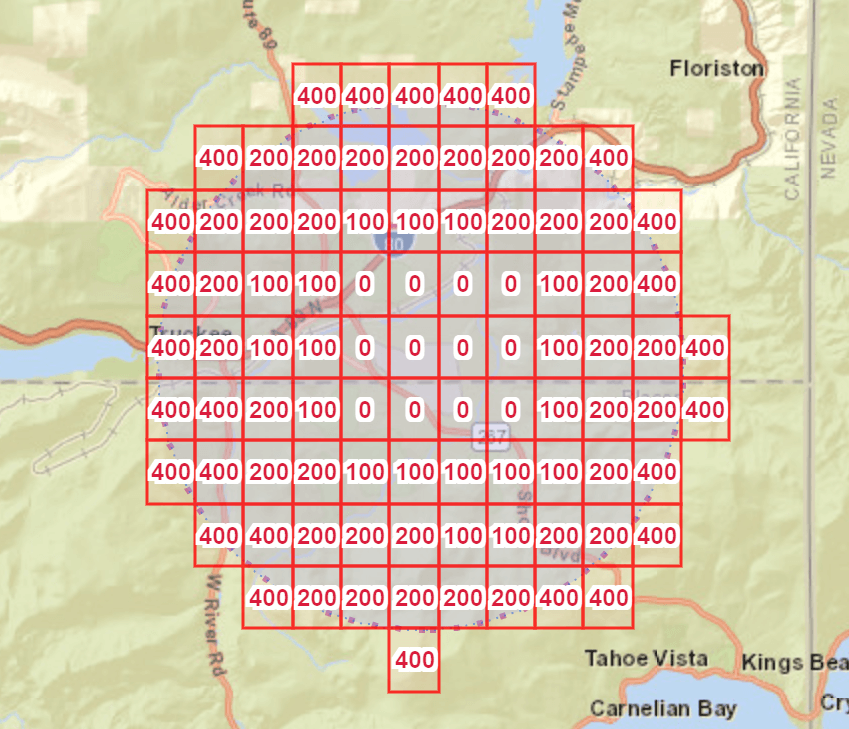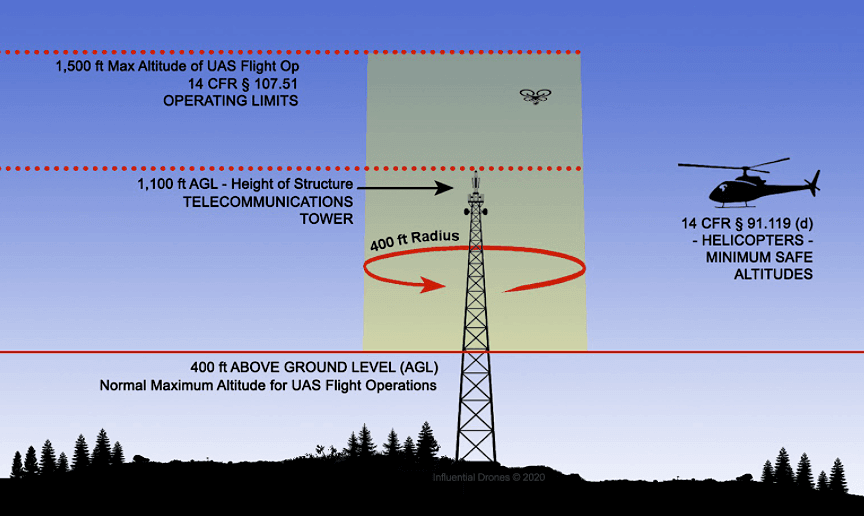Nov. 24, 2020
What is a Safety Policy?
A well written safety policy is the foundation of an effective safety management system (SMS). It assists an organization in its decision-making process. It details the steps an organization should put in place to protect the health and well being of its employees while ensuring a successful mission. It needs to be carefully thought out, informed by relevant data and always focused on how a UAS will be used. The goal of a safety policy is to enable repeatable and safe UAS operations while managing risk throughout the process. It provides a company more oversight and control when management has less direct involvement over day-to-day flight operations. Policies mitigates risk and should be reserved for executive leadership to approve, define and delegate. Subordinate groups should reference a safety policy for guidance.
Writing a safety policy is challenging for a UAS organization. In all cases, a one-size-fits-all approach will not work. Nor will a generic policy, shared across industries. When an organization is small, there is nothing to delegate because executive leadership and the subordinate remote pilot in command are one in the same. When an organization is large, a UAS is most often viewed as a tool to make a job more efficient. Sometimes it is believed the aircraft falls within the boundaries of existing policy. This should not be a standard of thought, unless an entity has an existing flight department that can be leveraged.
Defining Operational Hazards
The safest course of action in any aviation operation is to ensure hazards are identified early and mitigations are implemented and followed. A safety policy must clearly identify and define hazards.
Risk should be divided into low, medium and high categories, with medium and high risks mitigated as part of the safety policy. An example of a high-risk operation is flying extremely close to or between high tension wires or anything that can cause radio/magnetic interference resulting in a flyaway. A flyaway is a complete loss of aircraft control, resulting in an unpredictable flight that generally ends in a crash.
Understanding the Operating Environment
Small UAS flight operations typically take place at and below 400 feet above ground level (AGL). These are the same altitudes all crewed flight operations must pass through to take off and land. This is also the area where nature’s obstacles reside and human-made structures exist.

Operating a small UAS in close proximity to an airport is a constant concern. When writing a policy, determining what areas are near an airport or in controlled airspace is a good starting point. What is acceptable near an airport is distinctly different than what occurs in other areas. Risk increases as air traffic grows. This priority approach is aligned with the FAA’s implementation of the Low Altitude Authorization and Notification Capability (LAANC) program, an FAA and industry initiative that provides UAS operators access to execute flight operations in controlled environments below 400 feet.

LAANC is an automated process that factors in a variety of dynamic risk conditions to help determine UAS airspace authorization. An important tool for remote pilots is facility maps. (Fig.2) This is a designation of maximum allowable altitudes around airports without requiring additional safety analysis. Facility maps are very helpful and are used by LAANC but they don’t apply to hazards away from airports.
Under Part 107, the maximum allowable altitude a UAS can fly is 400 feet above the ground, higher if it remains within a 400-foot radius of a structure.
Physical structures – such as homes, billboards, telephone poles, power lines, towers and high-rise buildings – as well as natural obstacles such as trees, mountain tops and hills – all must be evaluated. These are static obstacles that cause dynamic results. Flight operations are also impacted by RF and magnetic interference, human interaction, wildlife migration, weather and wind conditions. These factors, which define the UAS operating environment, can change dramatically based on the geographic location.

Establishing Clear Controls – Risk vs. Gain
Every major operational hazard must be mitigated with a policy control. Organizations operating a UAS should accept no unnecessary risk as part of their SMS. An operator may be able to operate a UAS without any regulatory or approved flight manual restrictions due to observed environmental wind speed. However, an organization that has assessed high winds as an operational hazard can add a risk control in their safety policy.
“Operations shall not be conducted when max observed winds are over 35 knots or gust spread exceeds 15 knots for operations in mountainous or urban terrain.”
Defining hazards, their effects and forms of mitigation in a safety policy, helps to facilitate mission success in otherwise high demanding, high risk circumstances.
Warranted risk must also be clearly defined in the safety policy. For routine or “low gain” operations that can be delayed or accomplished later with little to no loss, the warranted risk of loss or damage should be defined in the policy as low. In a law enforcement application, the warranted risk for self-certified night time operations over urban terrain may be much higher, if it results in a leadership-defined outcome of “to save a life or likely to result in the apprehension of a suspected felon in the act of a violent crime.” Risk versus gain must therefore be considered for every operational requirement.
Core Policy Components
When drafting a safety policy it is helpful to divide content into subheadings and populate each topic by asking the right questions. While every scenario can’t be conceived, reasonable exposures should be discussed. A safety policy can then be defined using specific language to empower or restrict subordinate groups.
Sub-heading categories may include the following:
- Policy Statement
- Responsibility Roles
- Operating Procedures
- Prohibited Use
- Procedures for Deviation
- Accident Reporting
- Data Collection & Retention
- Penalties for Misuse
The following questions may be considered:
- Will unmanned aircraft operations be included into an existing crewed aviation program?
- Is the program forced on commercial or public safety missions? How does the operation align with business and stakeholder interest?
- Will operations take place during a set time or when visibility is limited?
- What is the activity in the area? How congested is the airspace?
- Can the imagery or data collection be completed at an alternate time during low traffic flow?
- What is the risk to non-participants, structures and properties close in proximity to the area of interest?
- What is done with residual imagery and data once collected? Is there a sensitive area that may be inadvertently captured?
- Does the equipment being used have any security concerns?
- Will operations take place beyond a line of sight or over crowds?
- What are the limitations of the aircraft? What are the limitations of the crew? How many crew members are required?
- Who is responsible for maintaining the safety policy?
Repeat these questions when a locale changes. As organizations grow, having a safety policy that is broad-reaching, with a local supplement specific to a region, is the proper approach.
Calling All Mentors
If a business has an aviation department, this is a tremendous resource that should be leveraged. While a UAS operation differs greatly from business aviation, it can be advantageous to have experts in-house who can assist in developing maintenance practices and rendering opinions on which section of the FARs a business interest may operate.
Typical aviation departments operate under Part 91 when transporting company employees around the world. Some corporations allow the use of the aircraft to be leased out to generate revenue to help offset corporate operating costs. This type of operation falls under Part 135. Having the ability to inspect and repair aircraft in-house could fall under Part 145 (Repair Station) certification. This can provide additional benefits when setting up maintenance schedules and procedures.
The difference between crewed and uncrewed aviation is apparent, and unfortunately this difference can contribute to a great divide between pilots. Part 61 pilots may not view Part 107 remote pilots as true pilots. There also is a resistance towards cross-over capacity, because Part 61 pilots doing Part 107 flight operations may jeopardize pilot ratings and certifications if an incident occurs with a UAS. While this is a valid concern, a Part 61 pilot has experience to share with a Part 107 remote pilot. FAA Certified Flight Instructors and experienced crewed pilots should be available to provide guidance and support. Organizations with existing aviation departments should leverage their existing team when possible.
Safety is a Byproduct of Training Excellence
A corresponding operations training program for UAS operators and maintainers must be a supporting part of any SMS. Leaders and managers must “begin with the end in mind” to create operators that are masters of the basics. A training program that standardizes flight or maintenance tasks will greatly enhance an operator’s ability. Essential components should be added to education programs. Process flows and checklists are proven methods to enhance safe operations and reinforce safety policy. A semi-annual review of the organization’s policy as part of a training program will greatly enhance the effectiveness of risk management and mitigation.


 International Business Aviation Council Ltd.
International Business Aviation Council Ltd.